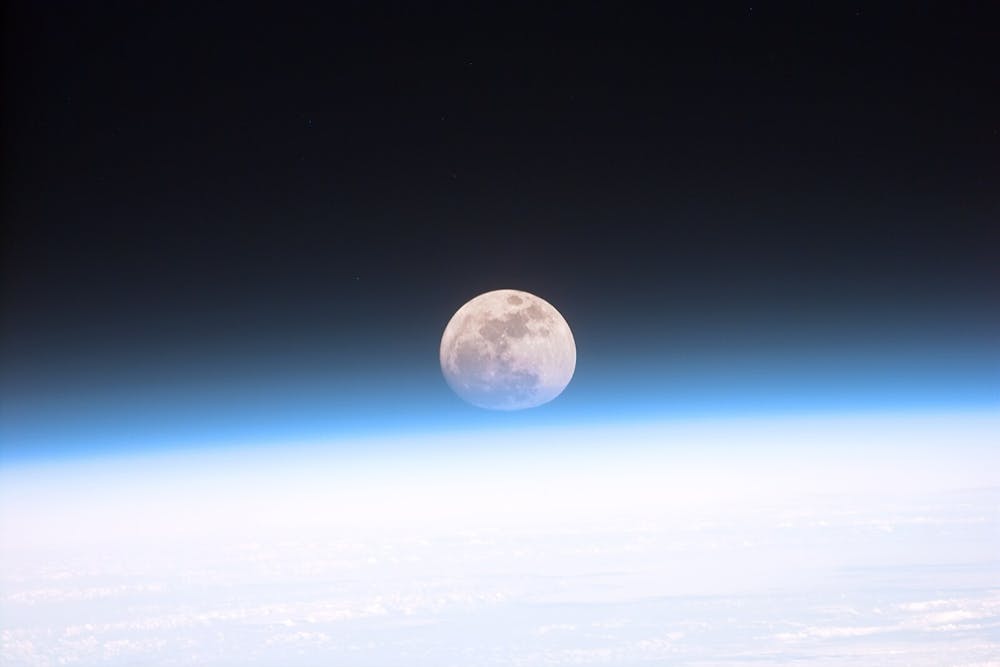By Aneri Upadhyay
Staff Writer
The moon shines down on campus every night, lighting the way for students to go to and from clubs, classes or anything else. However, a recent discovery has shown that the moon is shrinking — and the effects are unpredictable.
According to the Weather Channel, the moon has lost around 150 feet in its circumference over the past hundred million years. This is due to its core cooling down over time. The moon’s crust is forming more canyons as it shrinks, which has caused tremors that are referred to as moonquakes. As seen in ITV, the moonquakes are quite powerful and can last for hours. The strongest has registered as the equivalent of a 5.0 magnitude earthquake.
Moonquakes are similar to earthquakes, as they both have moving fault lines according to Space. However, to better visualize the intensity of what is happening, scientists have compared the moon’s shrinking to that of a raisin shriveling up.
The moon’s surface is also less dense than Earth’s, so there are parts that can come loose on impact. This means that, unlike earthquakes, moonquakes are more likely to lead to landslides on the moon’s surface.
Moonquakes aren’t a new concept. The moonquakes are reported to have started around 50 years ago, according to Space. However, a cluster of fault lines near the South Pole was recently discovered by the Lunar Reconnaissance Orbiter, which researchers have been able to connect with the recent moonquakes. This does not bode well for scientists on Earth who planned to land on the moon’s South Pole through the Artemis mission in 2026.
Before this mission, scientists need to be cautious of the shape of the moon’s land, as well as how dry it is as buried water could provide resources in the future, according to Space. Researchers are also trying to pinpoint where moonquake active zones are, so that future missions know where there are safe places to land, and also make the mission and its gear more moonquake-resistant.
NASA also hopes to build human settlements on the moon eventually, according to the Weather Channel. This could be jeopardized by the moon’s shrinking, especially if these moonquakes are a regular occurrence.
One of the researchers who originally connected the first moonquake to the South Pole was Thomas R. Watters, who spoke on his findings and recommendations to mission planners.
“Our modeling suggests that shallow moonquakes capable of producing strong ground shaking in the south polar region are possible from slip events on existing faults or the formation of new thrust faults,” Watters told Phys.org.
Nicholas Schmerr, a researcher and geologist, released a statement about what our future on the moon could look like.
“As we get closer to the crewed Artemis mission’s launch date, it's important to keep our astronauts, our equipment and infrastructure as safe as possible,” Schmerr told Space. “This work is helping us prepare for what awaits us on the moon — whether that’s engineering structures that can better withstand lunar seismic activity or protecting people from really dangerous zones.”







